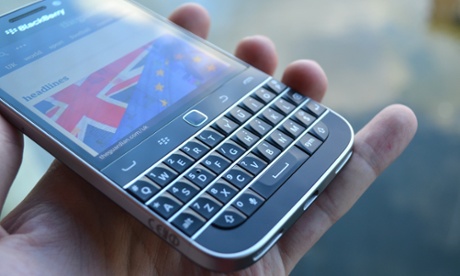
The BlackBerry Classic, as the name suggests, is the Canadian firm’s return to what it does best: a business-focused smartphone with a physical keyboard.
On its announcement, BlackBerry forthrightly proclaimed that the Classic was the second coming of the Bold, a phone last updated in 2011 and the one most diehard fans still cling to.
If a phone for emailing with a physical keyboard is the dream, this just might be it … but for everyone else, is this just a curio best left to another time?
Classic Bold design
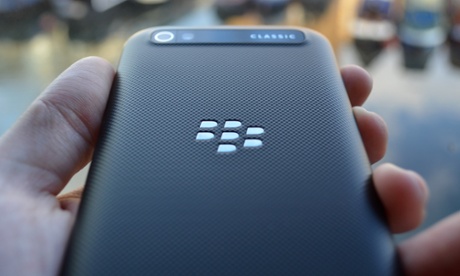
BlackBerry weren’t kidding when they described the Classic as a new Bold. Most people would be hard pressed to tell the difference between the two at first glance.
The Classic has a new metal band, around the edge and sealed back, which means the battery if not removable. The nano SIM card slot and microSD card slot for adding more storage are in the side of the phone.
The bottom of the phone has three holes, one for the micro USB cable for charging and syncing the smartphone, one for the speaker, which is decent if not exceptional for a smartphone, and the other for a microphone.
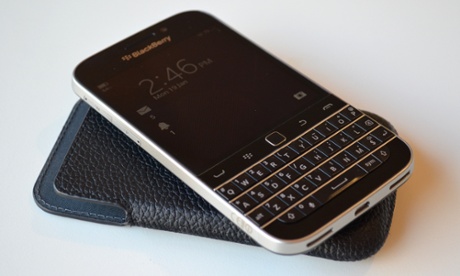
The Classic is quite thick and heavy for a modern compact smartphone at 10.2mm and 177g. By comparison the Bold was 11.4mm thick and weighed 107g and the iPhone 6 is 6.9mm thick and weighs 129g. Most top-end Android phones have similar statistics and even the low-cost Motorola Moto G weighs less at 143g.
The BlackBerry feels solidly built, however, designed to last as many of the company’s older models did. The back and sides also provide a reassuring grip in the hand. Using the Classic one-handed is easy thanks to the welcome return of BlackBerry’s action buttons and optical scroll button.
The screen is 3.5in and square, with a pixel density of 294 pixels per inch (ppi) – far below the 493ppi-plus screens of the large Android smartphones such as the Nexus 6 and even the 326ppi of the iPhone 6.
The screen is sharper than the 245ppi Bold, however, and text and images appear crisp enough for most uses. Only on small text do the pixels show and the edges become noticeably fuzzy. Images look colourful and the screen has wide viewing angles.
The keyboard is the real star of the show. It is arguably the best physical keyboard available, complete with shift, symbol and alternate keys, which makes entering text, numbers and punctation easy. It is a significant improvement on the keyboard of the Passport.
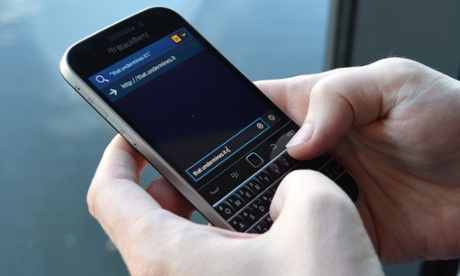
Specifications
-
Screen: 3.5in 720x720 (294ppi)
- Processor: 1.5 GHz dual-core Qualcomm Snapdragon S4 Plus
-
RAM: 2GB of RAM
-
Storage: 16GB plus micro SD card
-
Operating system: BlackBerry 10.3
-
Camera: 8MP rear camera, 2MP front-facing camera
-
Connectivity: LTE, Wi-Fi, NFC, Bluetooth 4.0, FM radio and GPS
-
Dimensions: 131 x 72.4 x 10.2mm
- Weight: 178g
Yesterday’s chips
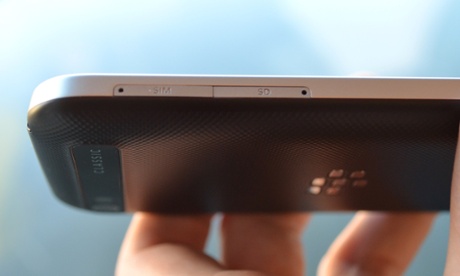
The chips and processors used in the Classic aren’t going to win any awards for speed or performance. They are older chips, which makes the Classic slower than the square Passport.
For what the phone is designed to do – process email, texts and messages – the Classic is up to the task. For playing games and those demanding apps that are available for the BlackBerry through Amazon’s app store (more on that later), the Classic will struggle.
Launching some apps, like the maps app, Facebook or Twitter, can take a while with a few seconds of lag that can be irritating. Switching between them once running is snappy, but the experience is noticeably slower than rivals such as the iPhone 6, Nexus 6 and even the Motorola Moto G.
The Classic will last a solid day of reasonably heavy use on a single charge, constantly reading and sending emails, checking Twitter and Facebook, with a little streaming music via Spotify.
Call quality was solid, as was the Classic’s reception, which matched competitors picking up 4G and 3G signal well.
Better software
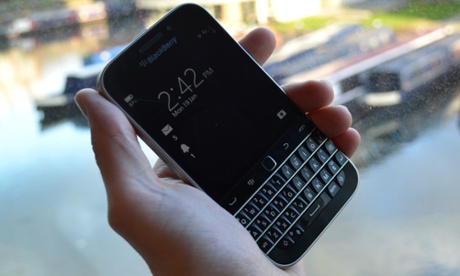
The Classic runs the latest version of BlackBerry 10 software with access to both BlackBerry’s and Amazon’s app stores. The latter provides a selection of Android apps, which is designed to overcome the shortcoming of apps available directly through BlackBerry.
While there are some exceptions to the rule, essentially that means business, productivity and secure apps come from BlackBerry World and entertainment apps come from Amazon. The flaw in the system is that Amazon’s app store only has a smaller selection of the billion-plus Android apps.
Apps such as Spotify, Feedly and a decent selection of others are available through Amazon, but some such as Netflix and BBC iPlayer are not.
The BlackBerry Hub collects all messaging notifications into one place and works better than any other “unified inbox” on any other platform. The BlackBerry is still the best machine for sending simple text to other people.
BlackBerry’s Universal Search is also solid and includes the BlackBerry Assistant, which although doesn’t quite have the same personality and panache of Siri or Google Now, works well for hands-free control and dictation.
The browser is much improved compared to older BlackBerrys, but still struggled with complex sites such as The Guardian, something Apple’s Safari and Google’s Chrome do not on modern smartphones.
Camera
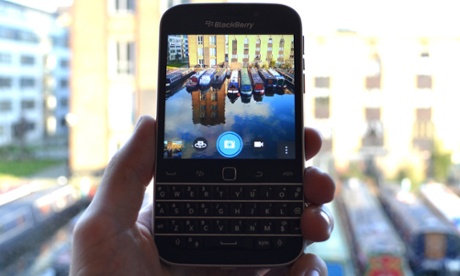
The eight-megapixel camera is solid, with panoramic, high dynamic range and time shift features that bring it up to par with the competition. Images are decent in good lighting conditions, but the camera struggles in low-light and can take a while to focus.
The front-facing two-megapixel camera is average and produces mediocre selfies that lack detail and colour accuracy.
Price
The BlackBerry Classic costs £350 without a mobile phone contract, which undercuts the £539 iPhone 6 by £189 and the £499 Google Nexus 6 by £149. But it is three times the price of the £100 Motorola Moto G, which has recently started to be bought by businesses as BlackBerry replacements.
Verdict
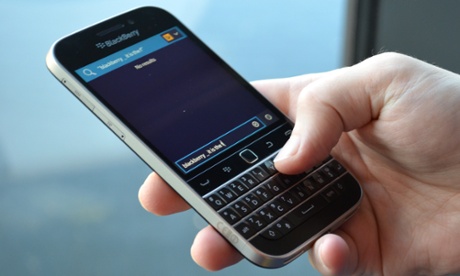
The BlackBerry Classic is the smartphone BlackBerry diehards have been waiting for. It’s keyboard is the best yet, the quick keys make touch-typing possible and the menu buttons speed up navigation.
But the Classic has little to tempt people away from the iPhone or the many solid Android smartphones, some of which are a third of the price. It feels sluggish and a bit clunky in use and is antiquated in look and feel compared to the competition.
The Classic achieves what it sets out to do and is a worthy upgrade for users of a Bold or other older BlackBerry. Better options are available for everyone else.
Pros: the best physical keyboard, solid build, good universal inbox, OK camera
Cons: lack of games and entertainment apps, confused interface with Android apps, sluggish performance, heavy and thick
Other reviews
• Motorola Moto G review – the best small smartphone is just £135
• Motorola Moto G 2014 review: the best all-round budget smartphone
• LG G3 review: the most usable phablet to date
• Motorola Moto X review: listening out for your dulcet tones
• HTC One M8 review: a lightning-quick, five-star phone
• Sony Xperia Z3 review: great battery life and quality camera
• Google Nexus 5 review: a flagship smartphone that costs the same as a mid-range device







